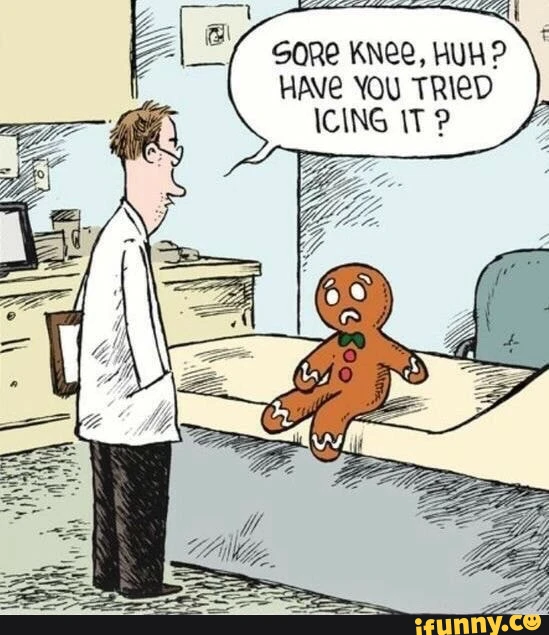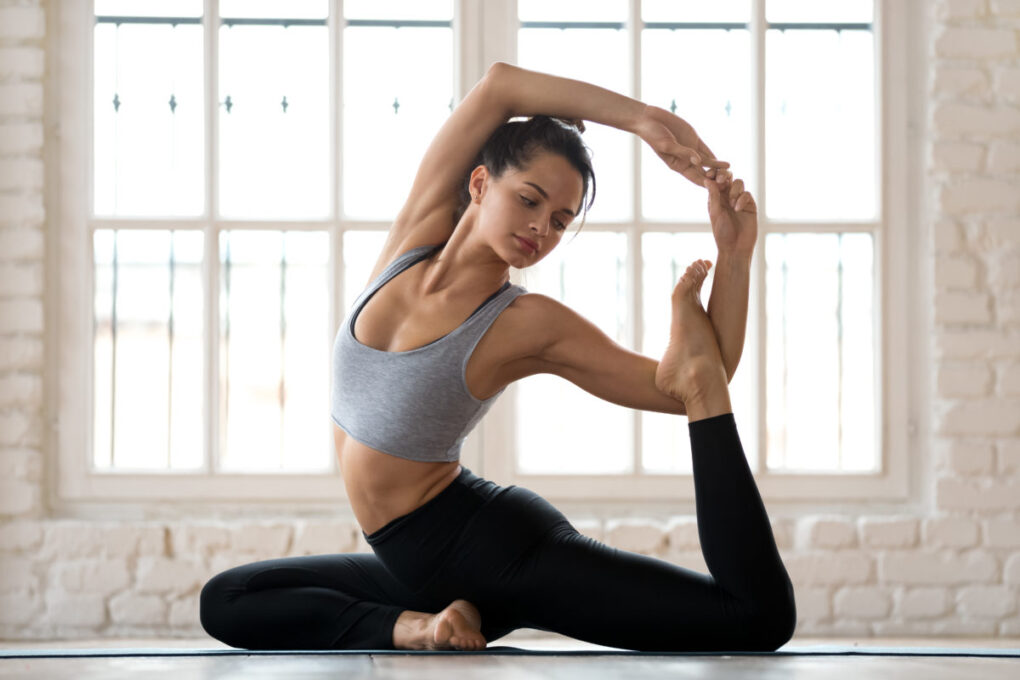Table of Contents
- Activities to Avoid or Change
- For Temporary Relief
- Stretches and Exercises for Longer-Lasting Relief
- Yoga Corner
Here, you will find self-care strategies for relief from grabbing pain on the inside of the knee that, at times, extends up and across the thigh. For more information about how people describe this pattern, look at this other post.
Activities To Avoid or Change:
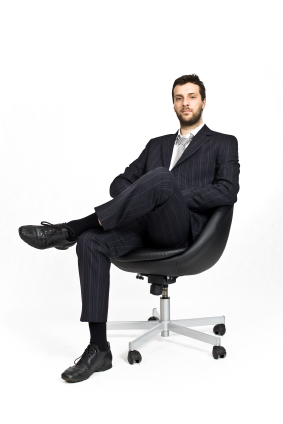
Don’t Be Cross
The figure-4 cross-legged posture aggravates this trigger point. The sartorius stabilizes and remains active even when you seem relaxed. Crossing your legs with your knees together is less stressful for this muscle.
Also, being stable for long periods without a place for the knee to rest can maintain tension in this muscle.
Uneven Ground
This muscle also stabilizes the hip to the knee when walking. Consequently, uneven ground, especially uneven steps, aggravates this knee pain.
See a Professional
Several serious problems create these symptoms. The spiraling pain could be a disc in your back. Also, the pain at the knee could be a meniscus tear. Both of those are serious complications, if they get worse.
For Temporary Relief:
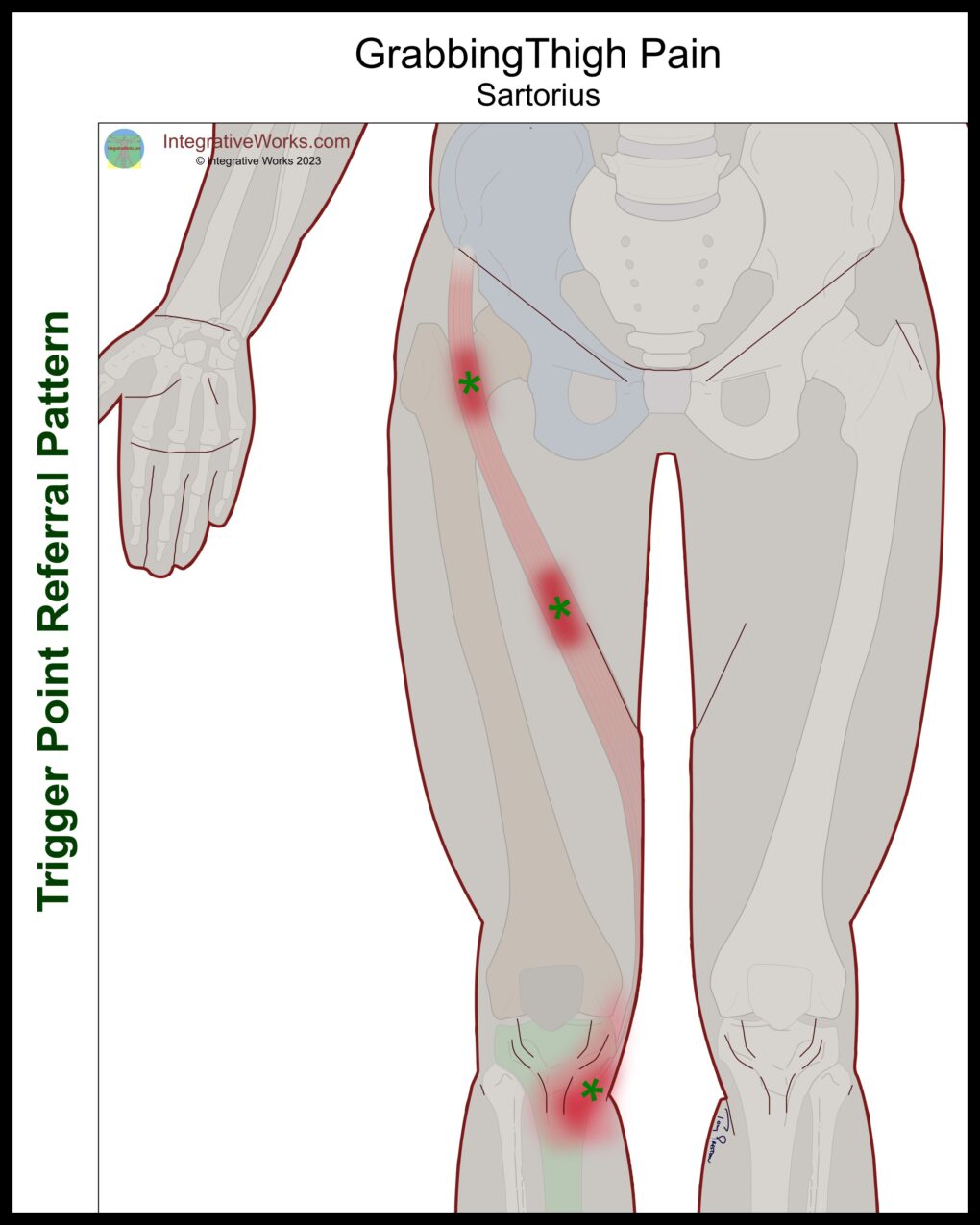
Pain Patch
Place a pain patch in the center of the pain. In most cases, this will be on the inside of the thigh, close to the knee.
Also, a little stroking of ice along the muscle helps. Follow a path from the inside of the knee along a diagonal toward the corner of the hip. Consequently, this tends to relax the muscle by reducing trigger point activity. Almost immediately, the thigh should move with reduced tension.
These self-care activities, like over-the-counter drugs, are not intended to replace appropriate medical attention. If you have concerns about these self-care activities, get help from a professional. Use these suggestions and strategies with discretion and at your own risk. See your doctor when your pain is severe, persistent, or not responding to these simple suggestions.
Stretches and Exercises for Longer-Lasting Relief:
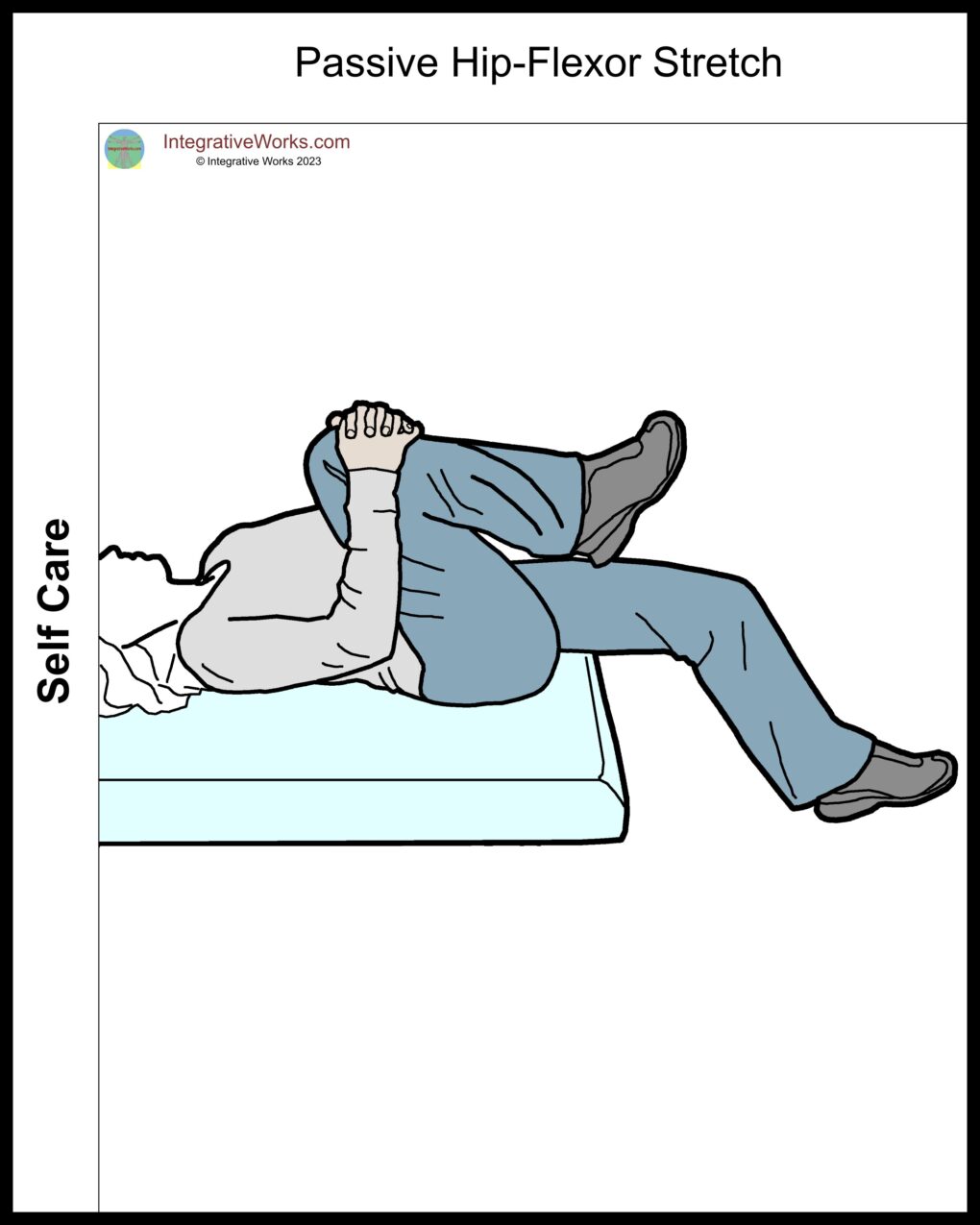
It is a Bit Complicated
The position in this illustration creates a stretch on several hip flexors, including the sartorius muscle. When the sartorius is taut with trigger points, it will produce some referral across the diagonal of the muscle. At times, the foot will turn in when the sartorius is tight. However, the other muscles have a great deal of influence here. Notably, when the tensor fascia lata is taut, the foot will be drawn laterally as it dangles below the knee.
Tips for Success
Here are a few tips. First, sit on the edge of a table, firm bed, porch, etc. Second, draw the other leg close to your chest. Next, lay back while keeping your knee drawn to your chest. Then, focus on breathing and relaxing the dangling leg while the hip flexors open. If you can, stay here for 90 seconds or more.
This is a gentle stretch of the sartorius. At first, the sartorius may produce some referral but should relax as the hip flexors relax and the knee lowers. A stroke of ice over the muscle will allow it to relax more quickly and with less discomfort.
A Caution
This position also stretches the iliopsoas, rectus femoris, and tensor fascia lata. To a lesser extent, other muscles are lengthened as well. If you have sharp pain across the lower back, stop this stretch. In that case, stretch the psoas muscle first, using gentle stretches from this other post.
I’d love your feedback on how this works for you and any suggestions you might have.
Email me at integrativeworks@gmail.com.
Yoga Corner
Start Gently
Sartorius is a complex muscle. Also, it creates concerning, sharp pain in the medial knee. Accordingly, start with some simple hip openers, like Pigeon. It is the more aggressive version of the passive stretch discussed above.
Hip Opener with Lateral Rotator Stretch
Adding a lateral rotator stretch creates a great stretch on the sartorius. However, this is aggressive and can create stress on the medial knee. So, try this mermaid pose, which allows you to hold the back leg in external rotation.
Support Integrative Works to
stay independent
and produce great content.
You can subscribe to our community on Patreon. You will get links to free content and access to exclusive content not seen on this site. In addition, we will be posting anatomy illustrations, treatment notes, and sections from our manuals not found on this site. Thank you so much for being so supportive.
Cranio Cradle Cup
This mug has classic, colorful illustrations of the craniosacral system and vault hold #3. It makes a great gift and conversation piece.
Tony Preston has a practice in Atlanta, Georgia, where he sees clients. He has written materials and instructed classes since the mid-90s. This includes anatomy, trigger points, cranial, and neuromuscular.
Question? Comment? Typo?
integrativeworks@gmail.com
Interested in a session with Tony?
Call 404-226-1363
Follow us on Instagram

*This site is undergoing significant changes. We are reformatting and expanding the posts to make them easier to read. The result will also be more accessible and include more patterns with better self-care. Meanwhile, there may be formatting, content presentation, and readability inconsistencies. Until we get older posts updated, please excuse our mess.

